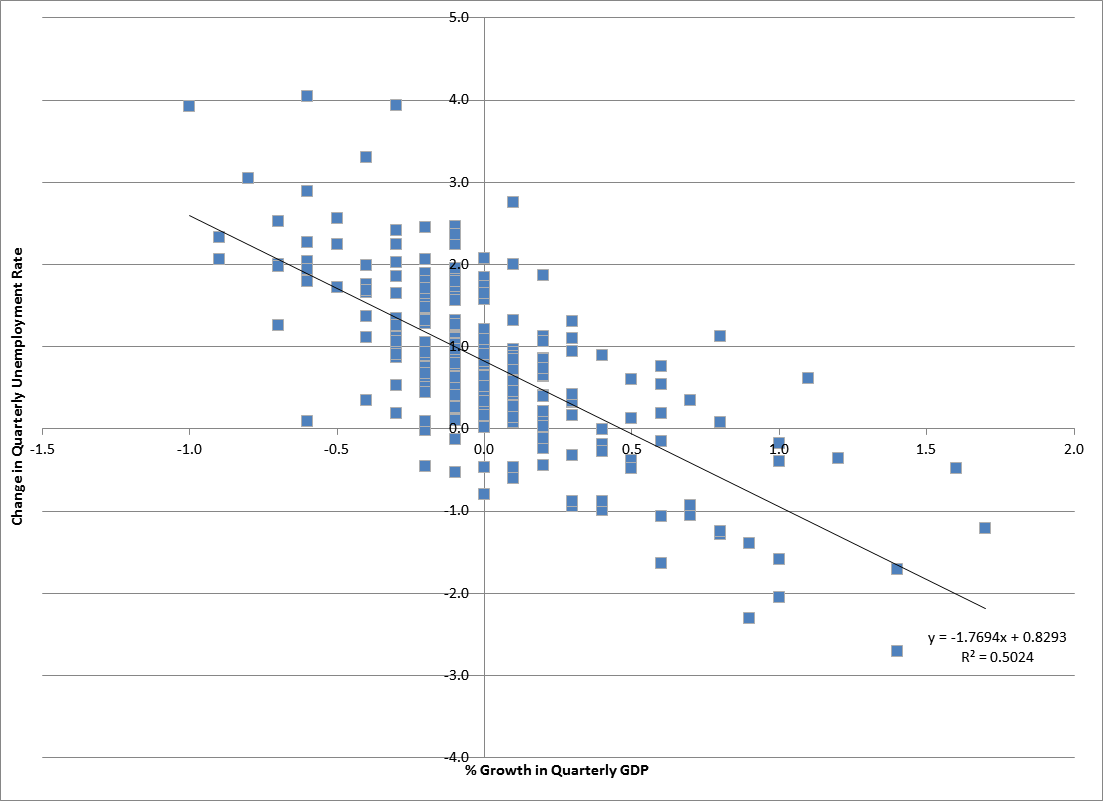|
Predetermined Variables
Predetermined variables are variables that were determined prior to the current period. In econometric models this implies that the current period error term is uncorrelated with current and lagged values of the predetermined variable but may be correlated with future values. This is a weaker restriction than strict exogeneity, which requires the variable to be uncorrelated with past, present, and future shocks. A common example of a predetermined variable is consumption in models with credit constraints and rational expectations. Here, consumption is predetermined but not strictly exogenous. An unpredictable negative income shock will be uncorrelated with past (and potentially current) consumption, but will surely be correlated with future consumption—the individual will be forced to adjust their future consumption to accommodate their poorer state, inducing correlation. If the shock affects current consumption, predeterminedness (defined now as lags only) provides potential ins ... [...More Info...] [...Related Items...] OR: [Wikipedia] [Google] [Baidu] |
Econometric
Econometrics is the application of statistical methods to economic data in order to give empirical content to economic relationships. M. Hashem Pesaran (1987). "Econometrics," '' The New Palgrave: A Dictionary of Economics'', v. 2, p. 8 p. 8–22 Reprinted in J. Eatwell ''et al.'', eds. (1990). ''Econometrics: The New Palgrave''p. 1 p. 1–34Abstract (2008 revision by J. Geweke, J. Horowitz, and H. P. Pesaran). More precisely, it is "the quantitative analysis of actual economic phenomena based on the concurrent development of theory and observation, related by appropriate methods of inference". An introductory economics textbook describes econometrics as allowing economists "to sift through mountains of data to extract simple relationships". Jan Tinbergen is one of the two founding fathers of econometrics. The other, Ragnar Frisch, also coined the term in the sense in which it is used today. A basic tool for econometrics is the multiple linear regression model. ''Econometri ... [...More Info...] [...Related Items...] OR: [Wikipedia] [Google] [Baidu] |
Endogeneity (econometrics)
In econometrics, endogeneity broadly refers to situations in which an explanatory variable is correlated with the error term. The distinction between endogenous and exogenous variables originated in simultaneous equations models, where one separates variables whose values are determined by the model from variables which are predetermined; ignoring simultaneity in the estimation leads to biased estimates as it violates the exogeneity assumption of the Gauss–Markov theorem. The problem of endogeneity is often ignored by researchers conducting non-experimental research and doing so precludes making policy recommendations. Instrumental variable techniques are commonly used to address this problem. Besides simultaneity, correlation between explanatory variables and the error term can arise when an unobserved or omitted variable is confounding both independent and dependent variables, or when independent variables are measured with error. Exogeneity versus endogeneity In a st ... [...More Info...] [...Related Items...] OR: [Wikipedia] [Google] [Baidu] |
Rational Expectations
In economics, "rational expectations" are model-consistent expectations, in that agents inside the model are assumed to "know the model" and on average take the model's predictions as valid. Rational expectations ensure internal consistency in models involving uncertainty. To obtain consistency within a model, the predictions of future values of economically relevant variables from the model are assumed to be the same as that of the decision-makers in the model, given their information set, the nature of the random processes involved, and model structure. The rational expectations assumption is used especially in many contemporary macroeconomic models. Since most macroeconomic models today study decisions under uncertainty and over many periods, the expectations of individuals, firms, and government institutions about future economic conditions are an essential part of the model. To assume rational expectations is to assume that agents' expectations may be wrong, but are corre ... [...More Info...] [...Related Items...] OR: [Wikipedia] [Google] [Baidu] |
Instrumental Variable
In statistics, econometrics, epidemiology and related disciplines, the method of instrumental variables (IV) is used to estimate causal relationships when controlled experiments are not feasible or when a treatment is not successfully delivered to every unit in a randomized experiment. Intuitively, IVs are used when an explanatory variable of interest is correlated with the error term, in which case ordinary least squares and ANOVA give biased results. A valid instrument induces changes in the explanatory variable but has no independent effect on the dependent variable, allowing a researcher to uncover the causal effect of the explanatory variable on the dependent variable. Instrumental variable methods allow for consistent estimation when the explanatory variables (covariates) are correlated with the error terms in a regression model. Such correlation may occur when: # changes in the dependent variable change the value of at least one of the covariates ("reverse" causation), # ... [...More Info...] [...Related Items...] OR: [Wikipedia] [Google] [Baidu] |
Arellano–Bond Estimator
In econometrics, the Arellano–Bond estimator is a generalized method of moments estimator used to estimate dynamic models of panel data. It was proposed in 1991 by Manuel Arellano and Stephen Bond, based on the earlier work by Alok Bhargava and John Denis Sargan in 1983, for addressing certain endogeneity problems. The GMM-SYS estimator is a system that contains both the levels and the first difference equations. It provides an alternative to the standard first difference GMM estimator. Qualitative description Unlike static panel data models, dynamic panel data models include lagged levels of the dependent variable as regressors. Including a lagged dependent variable as a regressor violates strict exogeneity, because the lagged dependent variable is likely to be correlated with the random effects and/or the general errors. The Bhargava-Sargan article developed optimal linear combinations of predetermined variables from different time periods, provided sufficient conditions fo ... [...More Info...] [...Related Items...] OR: [Wikipedia] [Google] [Baidu] |
